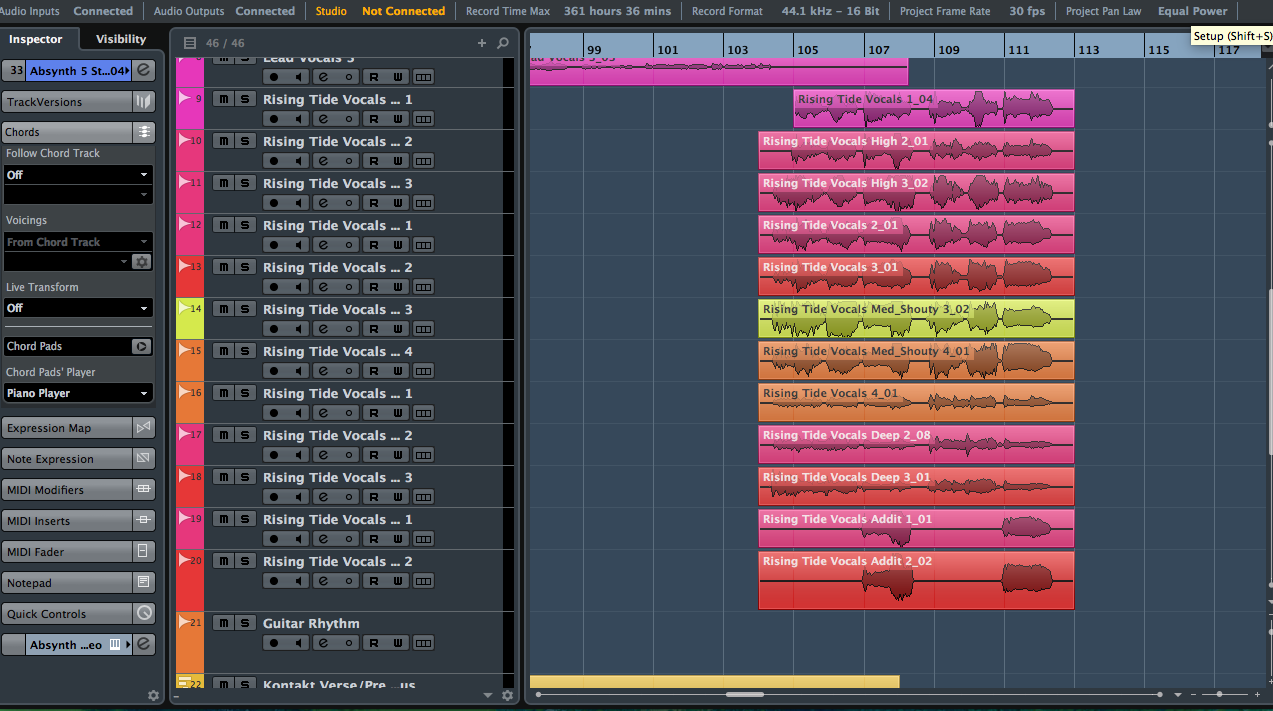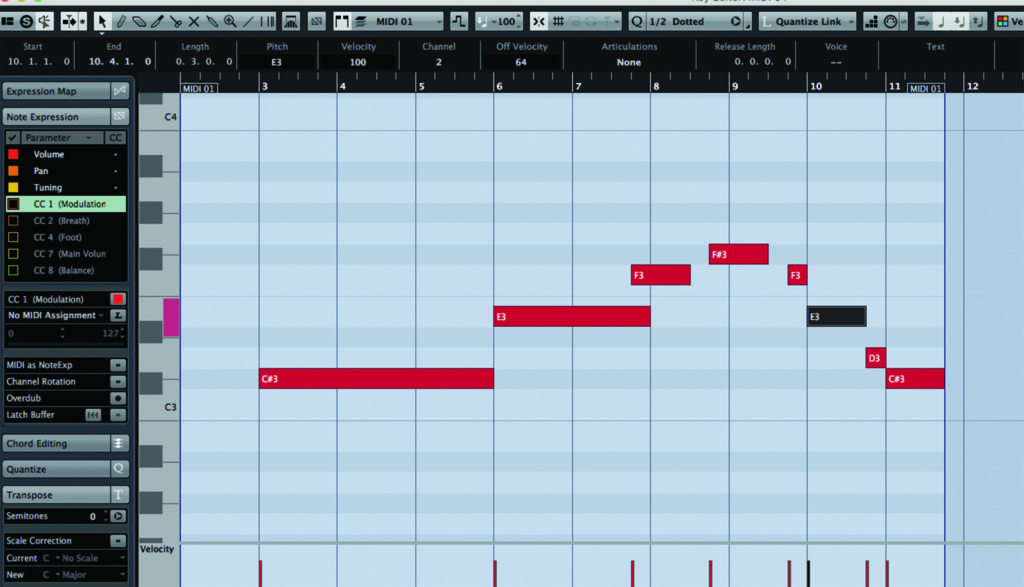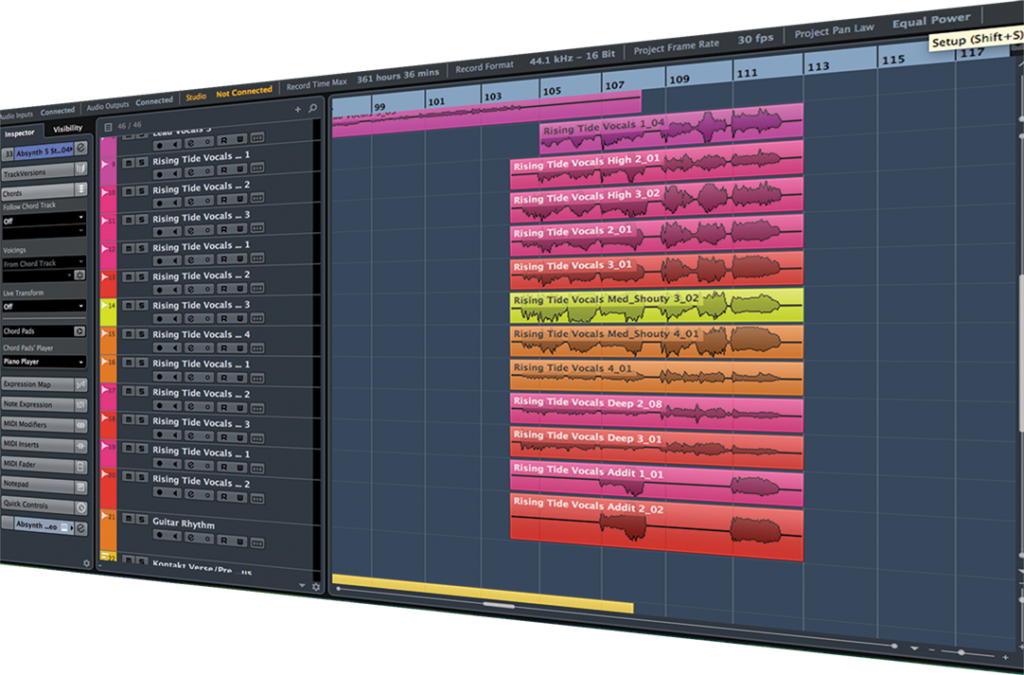Songwriting 2016: Making Melodies
In previous instalments of this series, we’ve looked at using your DAW to create the framework for your composition, and offered additional help to get you inspired with your chord arrangements. Now it’s time for Andy Price to take a more in-depth look at a song’s most important element – the central ‘hook’ or ‘top […]

In previous instalments of this series, we’ve looked at using your DAW to create the framework for your composition, and offered additional help to get you inspired with your chord arrangements. Now it’s time for Andy Price to take a more in-depth look at a song’s most important element – the central ‘hook’ or ‘top line’ melody…

Many moons ago, in our first element-by-element look at songwriting, we presented an overview of how to craft top-line melodies that fitted your song from scratch. Though in-depth, we felt we didn’t exactly highlight just what the melody of a song is and why it’s so important to train your brain to prioritise melody-making during the songwriting process.
Although many of our readers will be writing music devoid of any vocal (or indeed any live elements at all), we’re going to assume that you’re ‘songwriting’ here. That’s not an attempt to sound snobbish – the central concepts of writing a top-line vocal melody are easily transferred to other instruments, but songwriting in the traditional sense dictates your top-line should be the sung vocal melody.
But why is the top-line so important? The clue is in the name. It’s the overriding melody that your chord sequences, rhythmic structure and harmonic drive supports. It’s usually that ‘ear worm’ melody that lingers long in the brain after a song has been listened to, unconsciously making the listener want another fix and (hopefully) then translating into record sales or, since we’re writing in 2016, streams.
Brain Work
Many people, when first beginning to learn the techniques required to craft a song, will instinctively construct melodies by ear – often this is fine and can result in looser melodies less beholden to the musical information contained within the chords used. However, undertaking actual study of just what is going on when you’re writing melodies can result in far superior, catchier hooks, and a greater understanding of songwriting.
Having said that, it’s amazing to hear just how much those unstudied in songwriting naturally ‘know’ where their melodies should go when songwriting. This is due to the human brain’s perception of sound – we know instinctively when sounds are disharmonious, but it’s also due to the oversaturation of music in the western world.
Because all of us are exposed to music at various points throughout each day of our lives, we’ve collectively built up an internal catalogue of how music in different genres should sound. Therefore, when we try to build songs, we’ve already got a vast repository of comparative material lodged in our memory.
So, we’ve got an advantage before we even begin to look at any music theory – a brain that’s been conditioned by the contemporary music landscape. But our melodies can be better, and more unique, if we scratch beyond the surface and look at how a top-line defines a song.
The Maths of Melody
So how do we define a successful melody? Well, that’s a very subjective notion, but it’s probably a melody that a great number of people find they can’t get out of their mind. Various elements need to work in tandem to make this work well.
Tonal movement through the intervals that make up a key has to occur, as does a degree of repetition. Most top-line melodies repeat at various points throughout the song (usually the chorus) and also, a degree of expectation has to be cultivated in the listener by cleverly guiding their attention to the central hook through verses, pre-choruses and other supporting elements. All of these help to underline your top-line melody’s importance in the structure of your song.
One of the key differences between a top-line written by someone who’s just starting out as a songwriter and someone who’s carefully planning the scope of their melodies is just how much variation it has in relation to the underpinning chords. My early songs were defined by melodies that were slavishly sticking close to the root notes of the chords behind, while now, I quite often write the melody wholly independently of the chords, with a focus on harmonic movement.
This can then be applied to any chord structure you craft later in the process. This can be an interesting exercise, and may help you get away from the often limiting practice of writing to a chord sequence.
Regardless of when you form your top-line, the key point is that your song’s central melody is the most vital part of what could potentially make your song a success.

I’ve Got a Feeling
Another key aspect to the creation of your top-line is that it’s in-keeping with the rest of the previously written music (if you have it) for your song, or for the general tone (in emotional terms) of the song you wish to create.
This is particularly important for those in the professional composition sphere, who write music to a brief. As we highlighted before, there’s really no way of juxtaposing a downbeat, melancholy melody with a bright and jaunty chord sequence will express a mood clearly, so it does help to make notes when you’re conceiving your song as to what the ultimate aim of it will be. The most generally successful songs represent a clear (and relatable) emotion or feeling.
The shape and direction of your melody should have some constraints: if the shape of the melody is clearly defined, this will help to cement it as a musical motif that repetition will drive into your listeners’ heads. Otherwise, the melody will sound aimless and less ‘hooky’ and memorable. Many vocalists limit their melodies to a single-octave range in order to keep things straightforward, though it’s not the only approach – more dexterous vocalists will leap through octaves, while also keeping their melodies clear and therefore easy to remember.
Use the DAWs…
Using your DAW to help get your musical framework in order is more efficient than writing with your instrument in isolation. You can use your DAW to restructure your chords once they’re in place; through trial and error, you can try out different melody ideas over the top, and combine ideas without having to remember them.
This is perhaps one of the main attributes of digital songwriting: not needing to rely on your brain to retain the information you’re experimenting with. Quite often, as songwriters, we’ll go off on chordal, melodic or instrumental tangents.
In the planning or conception stages of your song, you should record everything you can. Then, once you’ve got an idea, create a separate project from your ‘writing’ project and work on it there.
While writing your top-line, you should be aware of the timbre and tone of other instruments, too. You may even find a melody sounds best playing solely on an instrument as an additional hook, supporting your as yet-unwritten top-line. Even after you’ve secured a worthy top-line melody, altering other factors cn enhance it further. Try speeding it up or slowing it down and write new chords.
This can fundamentally change the mood of your song and might inspire the creation of something brand new. Concocting successful melodies is a skill that takes time, patience and effort to master. The most vital piece of songwriting advice that we can give is to enjoy the process, and not to see the difficulties in creating the perfect melody as a technical job. Instead, see it as a journey through different avenues of expressing yourself.
Focus On – Keeping Things Harmonious
With your DAW, the creation of melodies (and indeed, every element of your song) is simplified, as we have one centralised hub in which to try out new melody ideas, tweak and alter them manually and refit your chords. Last time, we looked at one such example of your DAW being a vital aid to modern songwriting, by highlighting Cubase’s Chord Assistant, You can also use this tool to bolster existing melody ideas with harmonies. If you’ve created a melody-line idea using Chord Track, you can then ‘Generate Harmony Voices’ by clicking Audio > Generate Harmony Voices.

However, this will require you to modify the mechanically generated harmony to sound natural. It’s often better to take the time to create a harmony manually, making each track individually and mixing it together. The result can be that your top-line sounds bigger, brighter and more defined as a hook.
